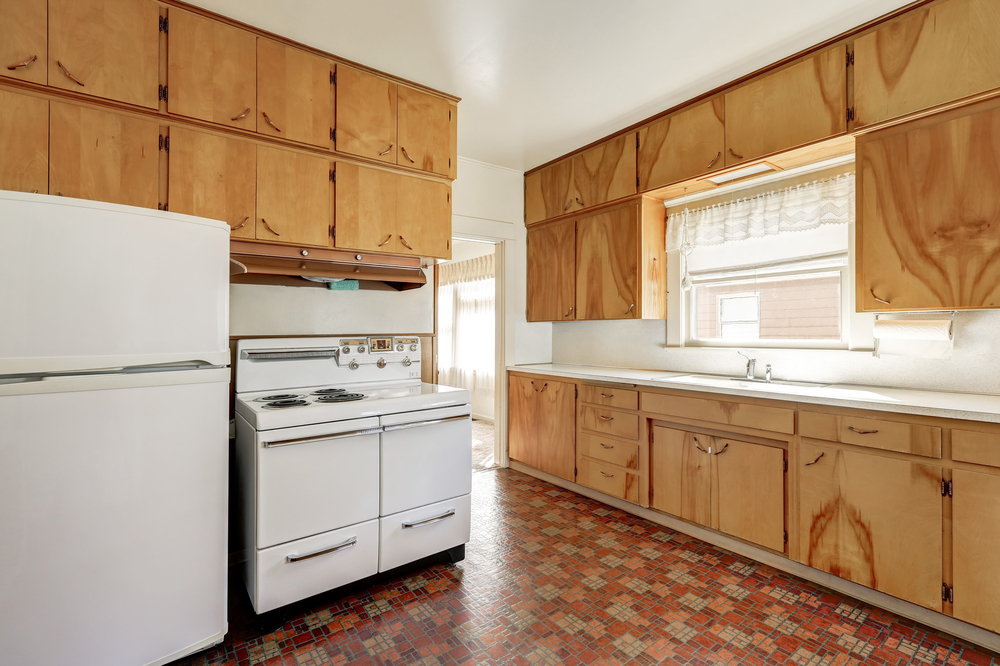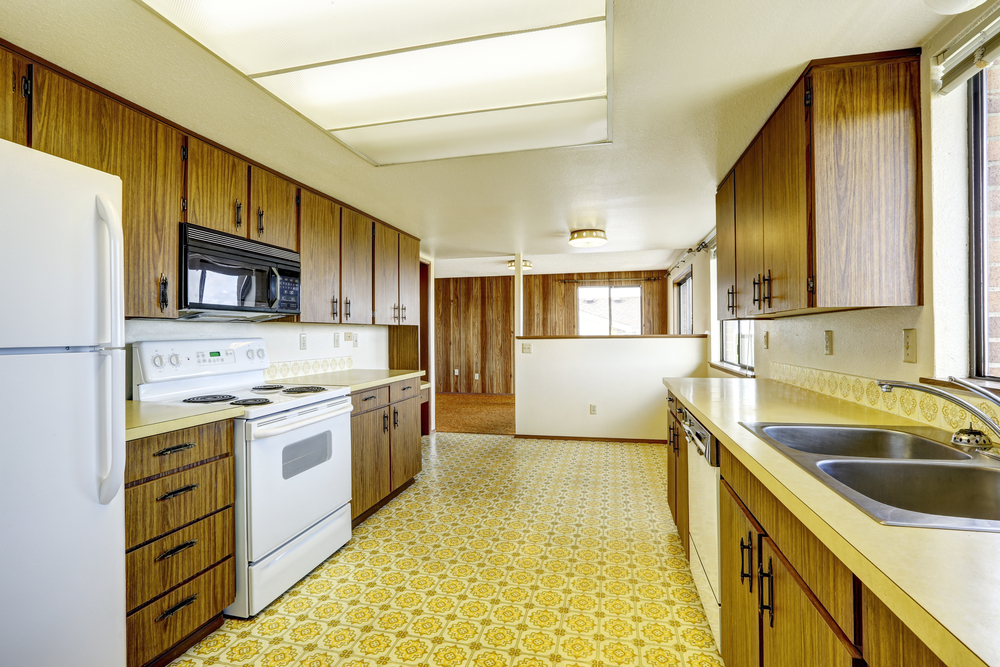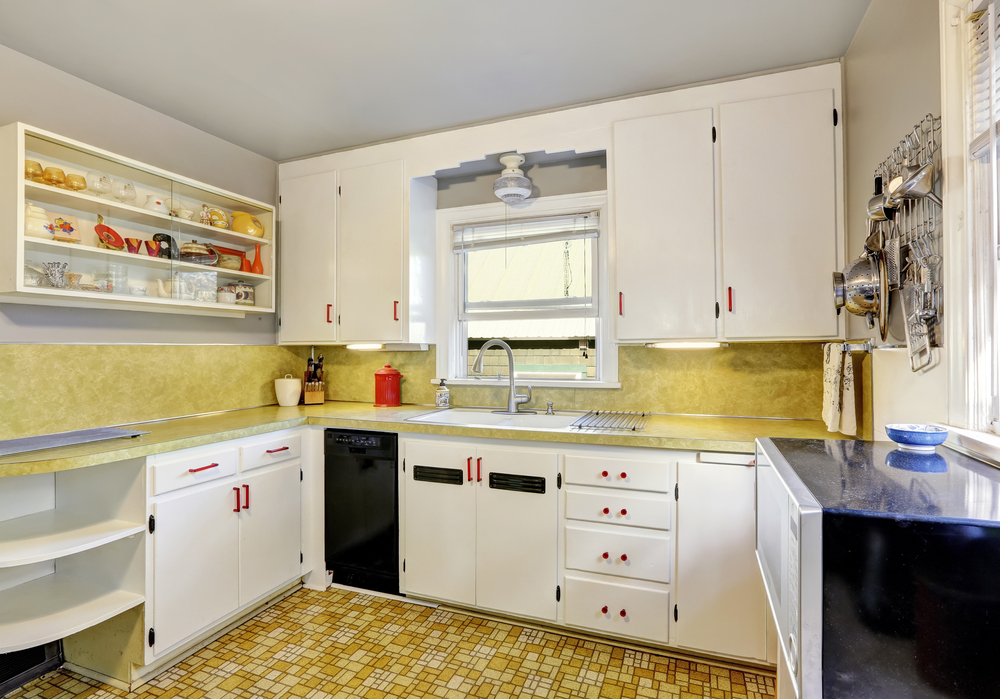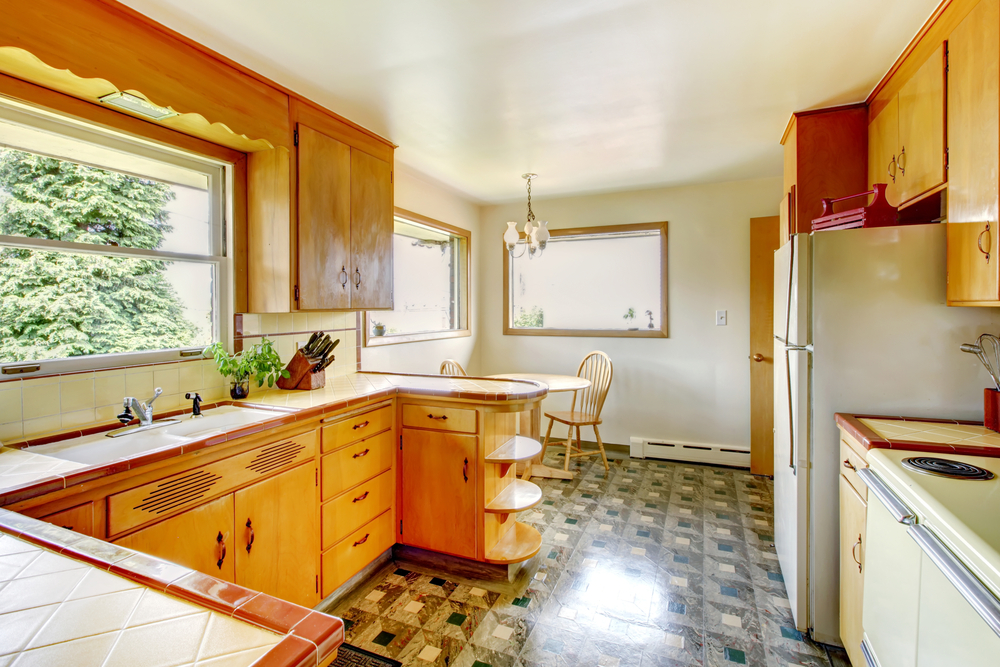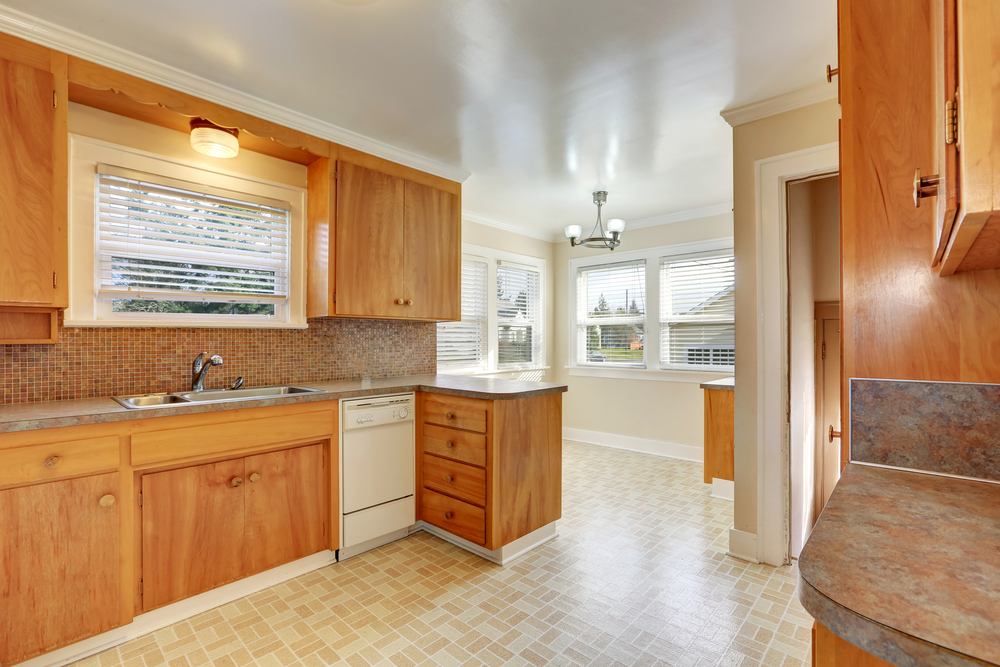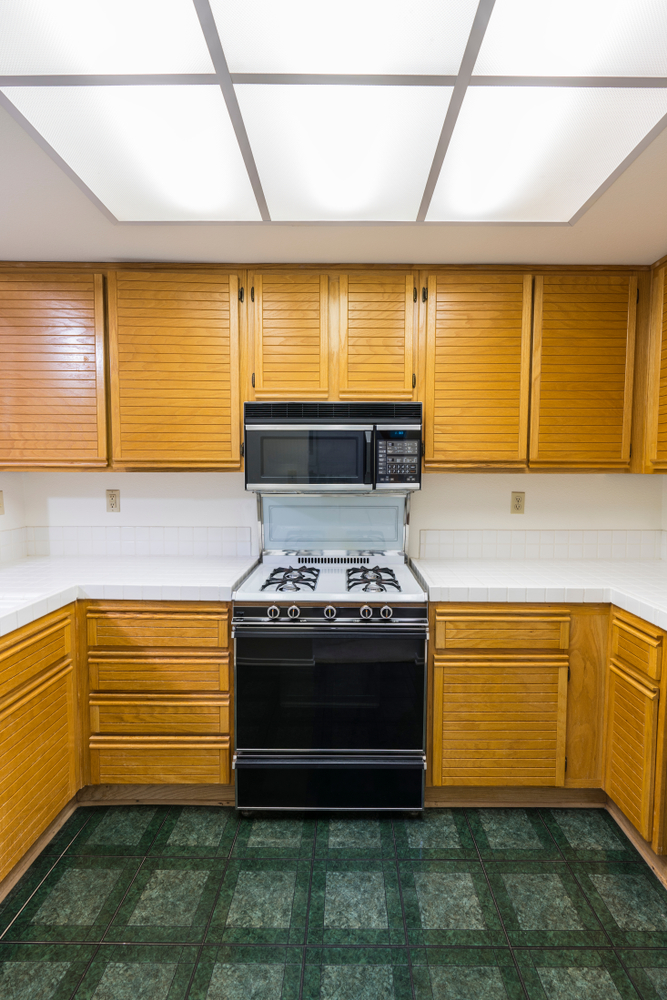Using linoleum flooring for the kitchen is not a novel idea. It’s been in use since the 1950s. The reason why it started trending was that it demonstrated five key characteristics: it was tough, durable, anti-microbial, stain-resistant, and eco-friendly.
However, over the years, less expensive vinyl and rubber tiling products made their way into people’s hearts and homes. Plus, people got tired of the same standard look. Today, linoleum kitchens are making a big comeback.
In this guide, we will look at the benefits of using linoleum in kitchens, including across cabinets, flooring, furniture, and so on.
Benefit #1: If You Want an Eco-Friendly Material, Linoleum is the Way to Go
Today, there’s renewed interest in linoleum for kitchen flooring because it is an eco-friendly material as compared to its synthetic vinyl counterparts. Linoleum is a natural material, comprising reusable materials such as linseed oil, cork powder, wood flour, and limestone dust (which is added for extra strength).
Unlike vinyl, these materials break down easily, making linoleum the preferred choice among environment enthusiasts.
Benefit #2: Linoleum Is Scratch-Resistant
Another advantage of using linoleum is that due to its thickness, you will not see gouges or scratches as easily as you do in vinyl flooring. A resilient surface for the kitchen makes extra sense as you end up spending considerable time in it.
Benefit #3: Linoleum Is a Highly-Durable Material
Would you believe us if we told you that linoleum can last between 25 to 40 years without so much as a scratch? That’s the power of this ultra-strong kitchen flooring material. In stark contrast, vinyl tiles last anywhere between 10 to 20 years, making linoleum a smarter and cost-effective choice.
Benefit #4: Linoleum Blends into a Retro-Styled Kitchen Interior
If your kitchen’s aesthetics is inherently retro in style (take a look at the image above, for example), this material is the perfect choice for you. Linoleum comes in amazing classic and retro designs. Your vinyl, rubber, or other modern flooring solutions don’t stand a chance. If you want a mid-century look and feel in your kitchen, linoleum can turn out to be your best bet yet.
Benefit #5: Linoleum Is Easy to Care For
Another huge advantage of this all-purpose material is that it is super easy to maintain and clean. You just need to sweep and use a damp mop occasionally (more like once a month). If you want to get rid of stains, use a high-quality, pH-balanced, and non-abrasive cleansing agent for spot cleaning.
Benefit #6: Linoleum Is Less Expensive than Other Tiles
Another benefit of using linoleum is that it is more budget-friendly than say ceramic or hardwood tiles. In terms of the absolute costs, you can buy a linoleum tile for about INR 156 to INR 280 per square foot. Professional installation costs should be around INR 230 to INR 800 per square foot. While linoleum is more expensive than vinyl, its durability more than makes up for the extra cost.
Drawbacks of Using Linoleum
In this section, we will quickly look at the drawbacks of linoleum:
- Linoleum is vulnerable to moisture damage. Due to the presence of natural materials, the surface is porous in nature and by extension, can easily absorb spills and liquids. If the spills are not treated in time, you risk damaging your linoleum floors for good.
- When installing linoleum, make sure that is sealed. The tile should be coated with a clear acrylic sealer immediately as the application adhesives dry. Do not walk on the floor before this is done. Wait till the acrylic sealer dries out completely. Plus, remember that you’ll need to reseal the floor annually if you want to maintain its quality as well as appearance.
- Do not go the DIY route when installing linoleum as this material is more difficult to install all by yourself. Its thickness is one cause of concern. Unlike vinyl, it can break or crack easily if it is not installed the right way. So, seek professional help if you want to install linoleum in your kitchen.
- Linoleum dents easily with sharp objects (such as furniture legs or high heels) so exercise caution.
- If exposed to constant sunlight, linoleum can darken or become yellowish with time. You can add protective coatings to avoid this.
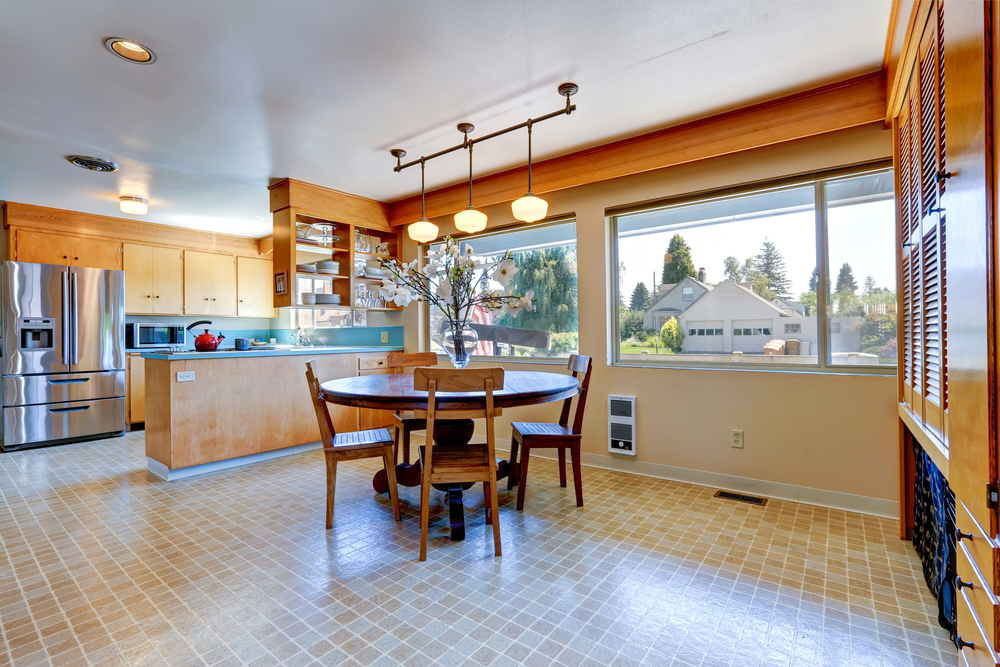
There you have it. Granted that linoleum kitchens were a big deal in the 1950s, they are making a comeback owing to the 360-degree advantages that we saw in this blog. For more useful tips on how and where to use linoleum in the kitchen, consult with HomeLane’s team of design experts. Book a consultation and give your kitchen the makeover of your dreams.


